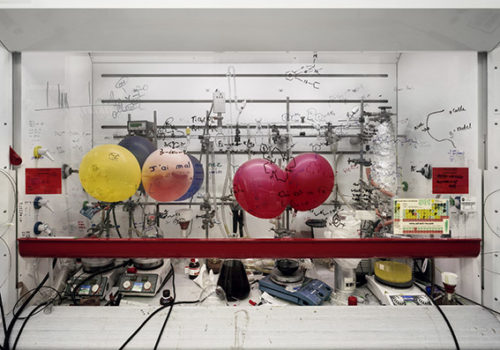MAST Foundation presents a selection of large colour images which the German photographer Thomas Struth began creating in 2007 at industrial and scientific research sites throughout the world that represent the cutting edge, experimentation and innovation in human activity.
Thomas Struth takes visitors on a discovery of places that are ordinarily off limits to the public, giving us a snapshot of the unexplored world behind technological innovation in the 25 large-format photographs on display at the MAST PhotoGallery. The artist has photographed space research labs, nuclear power plants, operating rooms, and drilling platforms with painstaking care, detached curiosity, and an ability to observe the characteristics of spaces and infrastructures that researchers no longer see because they have no bearing on their interests. One example is the image of the fume hood at the University of Edinburgh, which at first glance may look like a room decorated for a children’s party, between the writing on the glass and the colourful balloons. The technology is completely visible, but the actual purpose it serves remains hidden.
As Urs Stahel, the exhibition curator explains, “With his trademark precision and meticulousness, and with a remarkable aesthetic sensitivity, Thomas Struth creates magnificent images of the world of contemporary research and high technology. His photographs allow us to perceive all the complexity, importance, and force of the processes, but we can also sense the power and the politics of knowledge, and the business they conceal. Over time we learn to give a name to the individual parts of these processes; we appropriate them, integrating them into the world familiar to us, but the overall connection escapes our understanding, and we’re left with nothing but sheer amazement, at times bemusement, when faced with the alienating otherness of these hypertechnological ‘mechanisms’ of the present and the future.” Thomas Struth focuses his attention on machines as tools for transforming contemporary society, exploring the aesthetics of innovation and experimentation by recording their complexity, alluding to the hidden structures of control, power, and influence exercised by advanced technologies on our very existence.
On the other side of this theme, in the screening of the video Read This Like Seeing It for the First Time (2003) on the Gallery’s Level 0, the artist portrays human labour and our ability to work with the highest manual and artistic precision. The video, which documents five classical guitar lessons held by Frank Bungarten at the Lucerne School of Music, illustrates the close interaction between teacher and students, the necessary exchange between teaching and learning, between giving and receiving.
Thomas Struth (b. 1954). In the 1970s he attended the Kunstakadamie Düsseldorf, where he first studied painting with Gerhard Richter, then photography with Bernd and Hilla Becher. Along with the Bechers’ other students, including Andreas Gursky, Thomas Ruff, and Candida Höfer, he was one of the main exponents of the movement known as the Düsseldorf School of Photography. He rose to world fame through his photographs of urban scenes, individual and family portraits, large-format images taken in museums, and his series of photographs Paradise. Starting in 2007, after a visit to a vast shipyard on the island of Geoje in South Korea, he has taken on and illustrated a new theme: science and technology. Struth’s works are in the collections of the world’s most important museums.
Thomas Struth: Nature & Politics
February 2 – April 22, 2019
MAST Gallery
Via Speranza 42, Bologna
2 February – 22 April 2019
















